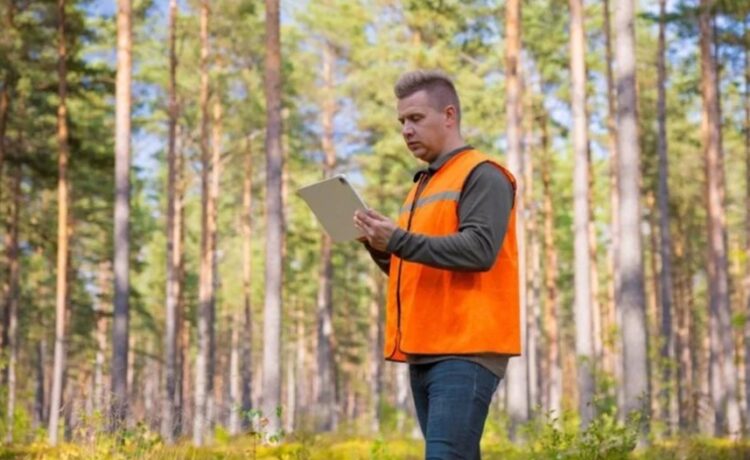Trees are not only essential components of our natural environment but also valuable assets that enhance the aesthetics and functionality of our properties. Whether you’re a homeowner, a property manager, or a developer, proper tree management is crucial for ensuring safety, complying with regulations, and preserving the health and beauty of your landscape. In the realm of tree management, one indispensable tool stands out: the professional tree report.
Understanding Tree Reports: A Comprehensive Overview
Before delving into the significance of reports, let’s first understand what they entail. A report, often prepared by certified arborists or tree experts, is a detailed document that provides essential information about the condition, health, and management recommendations for trees within a specified area.
Assessing Tree Health and Condition
One of the primary purposes of a report is to assess the health and condition of trees on a property. Certified arborists conduct thorough inspections, examining various aspects such as tree structure, foliage density, the presence of diseases or pests, and signs of decay or damage. By identifying potential issues early on, reports empower property owners to take proactive measures to mitigate risks and preserve tree health.
Identifying Potential Risks and Hazards
Trees, while beautiful and beneficial, can also pose risks, especially when they are located near structures or high-traffic areas. Professional tree reports meticulously evaluate potential risks and hazards associated with trees, including the likelihood of limb failure, root damage, or tree collapse. This information is crucial for implementing appropriate risk management strategies, such as pruning, bracing, or removal, to ensure the safety of occupants and property.
Complying with Regulations and Requirements
In many jurisdictions, there are regulations and ordinances governing the management of trees, particularly in urban and suburban areas. Reports play a vital role in ensuring compliance with these regulations by documenting essential details such as tree species, size, condition assessments, and recommended actions. Whether obtaining permits for tree removal or planning construction projects, having accurate and up-to-date reports can streamline the process and prevent potential legal complications.
Supporting Informed Decision-Making
Effective tree management requires informed decision-making based on reliable data and expert recommendations. Reports serve as valuable tools for property owners, managers, and stakeholders, providing them with comprehensive insights into the condition and management needs of their trees. Armed with this information, decision-makers can prioritise tasks, allocate resources efficiently, and develop long-term management plans that align with their goals and objectives.
Preserving Property Value and Aesthetics
Trees contribute significantly to the aesthetic appeal and value of properties, making them essential assets worthy of preservation and care. Professional reports help property owners safeguard their investments by identifying ways to enhance the health, beauty, and longevity of their trees. Whether through strategic pruning, pest management, or tree preservation techniques, proactive tree management guided by expert reports can enhance property aesthetics and curb depreciation.
Mitigating Liability and Insurance Risks
Unmaintained or hazardous trees pose significant liability risks for property owners, especially in cases of property damage or personal injury resulting from tree-related incidents. By obtaining regular tree reports and implementing recommended management measures, property owners can mitigate these risks and demonstrate diligence in maintaining a safe environment. Additionally, insurance providers may require reports as part of risk assessment protocols, potentially leading to reduced premiums for properties with well-documented tree management practices.
Promoting Environmental Stewardship
Trees are essential allies in the fight against climate change, providing numerous environmental benefits such as carbon sequestration, air purification, and habitat creation. Professional reports not only focus on individual tree health but also contribute to broader environmental stewardship efforts. By promoting sustainable tree management practices and advocating for tree preservation and reforestation initiatives, reports play a crucial role in nurturing healthier ecosystems and resilient communities.
Maximising Utility and Functionality
Trees serve various functional roles in urban and suburban landscapes, from providing shade and privacy to reducing noise pollution and enhancing property aesthetics. Reports offer insights into optimising the utility and functionality of trees through strategic management strategies tailored to specific property needs. Whether it involves selective pruning to improve views, installing support systems to mitigate structural weaknesses, or integrating trees into landscaping designs for maximum impact, professional reports help property owners unlock the full potential of their tree assets.
Adapting to Changing Environmental Conditions
As climate change continues to impact weather patterns and environmental conditions, trees face new challenges related to heat stress, drought, and extreme weather events. Professional reports recognize the importance of climate resilience and may include recommendations for adapting tree management practices to mitigate the effects of climate change. This could involve selecting drought-tolerant tree species, implementing irrigation systems to ensure adequate moisture during dry periods, and monitoring trees for signs of stress or decline. By proactively addressing climate-related risks, property owners can safeguard their trees against future threats and contribute to building more resilient communities.
Choosing the Right Arborist for Your Tree Report Needs
When commissioning a report, it’s essential to collaborate with qualified and experienced arborists who adhere to industry best practices and standards. Look for credentials such as ISA (International Society of Arboriculture) certification, which signifies proficiency in arboricultural knowledge and practices. Additionally, consider the arborist’s track record, client testimonials, and commitment to ongoing professional development.
Conclusion
In the realm of tree management, knowledge is power, and professional tree reports are indispensable tools for navigating the complexities of tree care and stewardship with confidence. From assessing tree health and identifying risks to complying with regulations and promoting environmental sustainability, reports provide invaluable insights and recommendations that empower property owners to make informed decisions and preserve the beauty, safety, and value of their landscapes. By investing in professional reports and partnering with certified arborists, property owners can embark on a journey of proactive tree management, ensuring a greener, safer, and more sustainable future for generations to come.














